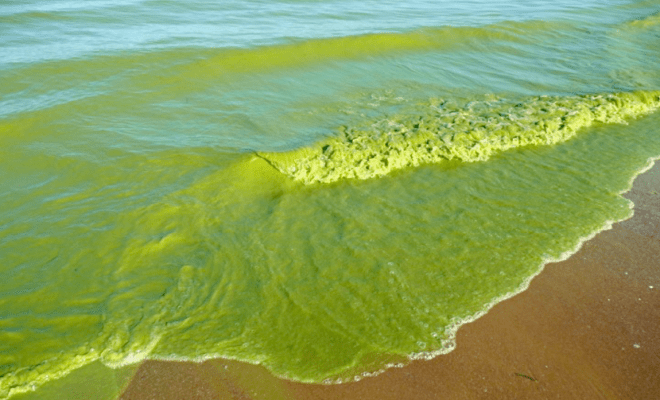
News
Algae Superblooms are Threatening Our Oceans
All around the world, there have been instances of massive algal blooms overtaking the usual sapphire blue waters of the ocean. Instead, beachgoers are subject to waters that are a vibrant green or even vividly red, and while from above can look quite striking, this phenomenon is seriously harmful to the well-being of our oceans.
According to the National Institute of Environmental Health Sciences (NIEHS), harmful algal blooms occur when toxin-producing algae are presented with the right conditions to grow excessively in a body of water. Algae consist of tiny microorganisms that reside in aquatic ecosystems and grow through photosynthesis.

While algae are commonly found in natural bodies of water, there are some types of algae capable of producing toxins that can seriously harm both marine life and humans alike. Harmful algae can be stimulated by a variety of environmental factors that can include temperature, pollution, and unbalanced nutrient levels in the water.
Harmful algal blooms occur when bodies of water are exposed to excessive nutrients from sources such as fertilizer, sewage runoff, and the dumping of industrial waste and chemicals. When these sources of pollution are paired with rising global temperatures, it creates optimal conditions for giant algal blooms to spread across large swaths of the ocean.
When an algal bloom takes over an area of the ocean, it can seriously damage the environment by depleting the oxygen in the water. By doing so, it chokes out other life, causing mass fish die-offs. It also blocks out the sunlight from reaching organisms that live in the deeper parts of the water, cutting off an important resource necessary for life.
Algal blooms can quickly contaminate the marine ecosystem, but they are also extremely harmful to humans. The cyanobacteria found in algal blooms produce potent neurotoxins that can cause serious health effects like vomiting, confusion, seizures, permanent short term memory loss, or death. These effects can occur by consuming seafood that has been contaminated or by swimming in waters infested with harmful algae.
Even more terrifying, recent research conducted by University of Michigan scientists showed that high concentrations of blue-green algae in bodies of freshwater have the potential of toxins becoming airborne. The biological material found in the algae is so microscopic, it can easily be carried by air, putting people at risk of inhaling these toxins and becoming ill. While this research was conducted in the freshwater area, there is still potential that it could happen in oceans as well.
This week, all 21 of Mississippi’s beaches were shut down by local authorities due to blue-green algal blooms popping up in the water. Swimming has been prohibited in the water, with testing providing conclusive results of bacteria being present in high concentrations. This is just one example of the many instances algal blooms have been found in our oceans.
For now, the NIEHS continues to study the occurrence of harmful algal blooms. They hope to develop a better understanding of how they form, the long-term effects they have on humans and the ecosystem, and how we can better detect and prevent in the future.





1 Comment